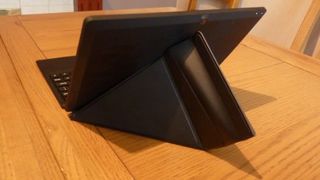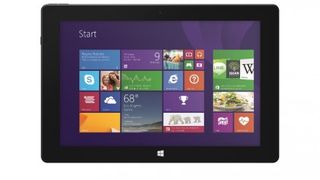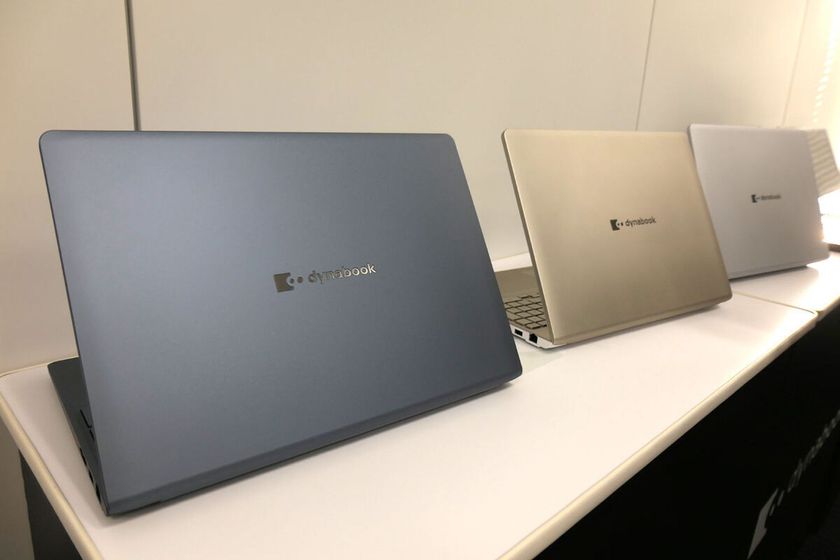TechRadar Verdict
It's very affordable, but we aren't completely convinced of the Element's merits.
Pros
- +
Very affordable
- +
Runs Windows 8.1, and legacy software
- +
Attractive design
Cons
- -
Puny performance
- -
Weak dock connection
- -
Small keys
Why you can trust TechRadar
You could be forgiven for not having heard of Schenker Technologies, since until now, the company has been better known in its native Germany. But you might have heard of high-end gaming laptops sold in the UK under the name XMG, which is a subdivision of Schenker.
The company therefore knows how to build mobile PC hardware, but has taken this expertise in a slightly different direction with the Element 10.1 tablet, which is powered by Intel's Bay Trail hardware platform, and runs the 32-bit version of full Windows 8.1, rather than the less useful Windows RT. Just like Microsoft's Surface Pro 2 tablet, it can be used in both tablet-friendly Modern UI and legacy desktop modes, and run any Windows software.
As with Acer's Aspire Switch, but unlike XMG laptops, the Element won't make a hefty dent in your wallet. It costs £239 (around US$400, AU$430) for the 32GB version, less than an iPad Mini, Samsung Galaxy Tab S, or either variant of Microsoft's Surface 2. That's excellent value, especially if you have a strong desire to use desktop PC software on your tablet, which isn't possible with the aforementioned Android, iOS or Windows RT offerings. Schenker bundles a 12-month Office 365 subscription in the box too.
Dock option
It just about fits into the hybrid tablet category, since it can be ordered with a dock (which costs £39, around US$65, AU$70) with a trackpad at the front and physical keyboard. Although the tablet and dock snap together with magnets, this dock isn't like the one on Acer's Aspire Switch, since it also has a thin cover that wraps around the back, covered in a micro-fibre material, which seals shut. Paying homage to the art of origami, the cover also neatly folds backwards into the shape of a sturdy but rigid stand for the tablet.

The connection between the two isn't especially strong. With the stand folded back the tablet sits in place fine, in the correct position for typing, but a fairly light tug disconnects them.
The Element's design has a glossy black bezel surrounding the 10.1-inch display, and a rubber coating on the back. The isolated-style keyboard is reasonable, although as with all keyboards of this size, people with Hodor-like fingers will find it a tad on the small side. Volume controls are unusually positioned at the top, with the power button at the side. There are 2 megapixel cameras at the front and back.
Sipping power
On the inside, the Element is no supercomputer. Rather than laptop-like performance, Bay Trail was designed with low power consumption and heat output in mind, to maximise battery life, which has been the Achilles heel for Intel processors, an issue that has so far pushed them out of the market for smartphones and tablets.

A 1.33GHz Intel Atom Z3740D processor drives the system, with 2GB of DDR3 memory. You can have either 32GB or 64GB of internal storage, expandable with a microSD card slot on the side. 3G is present on the £299 (around US$500, AU$535) 64GB model, and there are both Micro-HDMI and Mini-USB ports for connectivity. The dock doesn't have any additional USB ports, but Schenker has popped a pair of cables into the box that convert full-sized HDMI and USB to their Mini and Micro versions.
The screen has a fairly paltry resolution of 1280 x 800, which is nothing special in the face of high-DPI displays on the iPad and top-of-the-range Android tablets. But as I've found before, the Windows 8 desktop does not always play nicely on smaller screens at super-high resolutions when using certain software, even with the DPI setting increased, so a low-resolution screen is acceptable on Windows tablets, especially at this price.

Want a Blu-ray writer and a 13th-generation Intel Core CPU in your laptop? There's only one place on Earth for it

I'm a fat man who wants to lose weight, so here are 5 fitness-related Presidents' Day deals that could help me fight my flab

Spotify HiFi: release date rumors, price predictions, and everything we know so far
Most Popular






